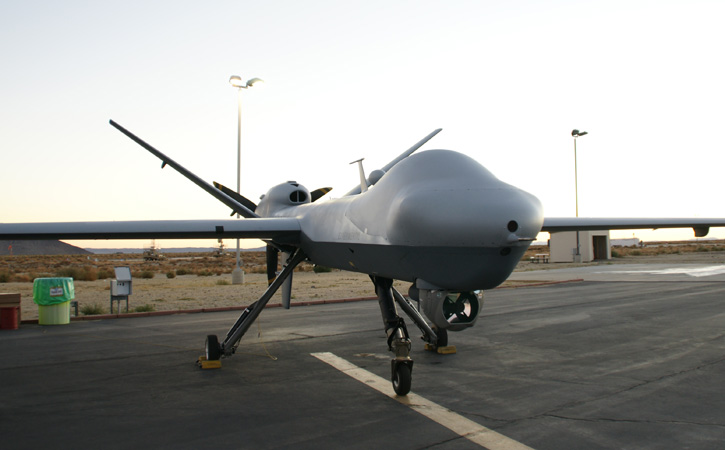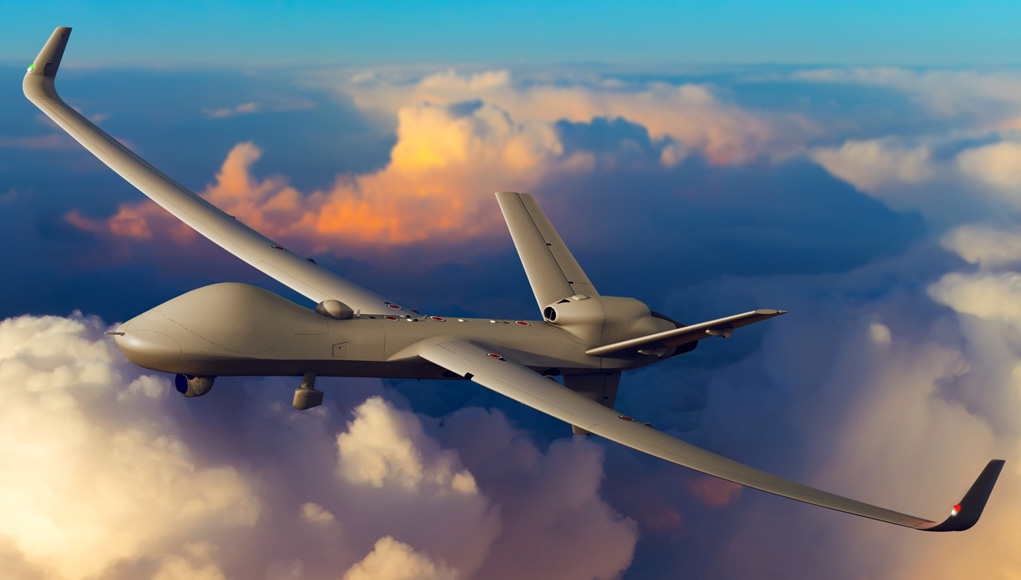Addressing the concern of restrictions of operating MQ-9 Reaper drones over Europe, due to the fact that this drone has not been certified to fly over civilian airspace, General Atomics Aeronautical Systems, Inc. (GA ASI), the drone’s manufacturer is developing a variant of the Predator B Remotely Piloted Aircraft (RPA) to be certified for flight according to the NATO Airworthiness Standard for unmanned aircraft.
Four European air forces have already selected the Predator B RPA. The UK and France are operating these drones overseas (in the Middle East and Africa), while the Netherlands ordered the drones but cannot operate them in country. Italy is the only European country operating the drones in its airspace. Germany, Spain and Poland also consider buying such RPAs but have reservations about their ability to fly them in Europe.
This new model, known as ‘Certifiable Predator B’ (CPB) should address these concerns. It has recently completed a successful internal Phase 1 Critical Design Review (CDR), along with reviews by two prospective European customers. The aircraft will receive certification-compliant wings and redesigned tails, both are expected to complete flight-testing late in 2015. The wings span 79 feet and enable over 40 hours of flight time for the aircraft. The company also has also applied for FAA Type Certification and is working with the FAA to develop Unmanned Aircraft Systems (UAS) airworthiness standards.
According to sources at GA-ASI, the design of CPB addresses requirements that were not part of the standard Predator B’s specification. In addition, new standards and requirements continue to be developed for RPA systems and their operational use that were not envisioned during Predator B’s initial development. The development of the system follows international airworthiness standards that include STANAG 4671, UK DEFSTAN 00970, SAE ARP4754A, MIL HDBK-516C, DO-178, and DO-254, as well as others.
What’s new in CPB?
Most significantly, the CPB airframe will be built with certifiable composite materials with the same process that is in use on many of the newest commercial airliners. In addition, CPB has undergone a comprehensive safety analysis of all of its subsystems, and their designs are being updated as necessary to address airworthiness standards including DO-178C and DO-254. Finally, among CPB’s many design enhancements are features that provide fire protection and all-weather operations, providing lightning protection, erosion resistance, bird-strike protection, and de-ice capabilities.
The company is on schedule to conduct flight tests of a test aircraft in 2016, leading to the first flight of a certifiable production aircraft in 2017. According to GA-ASI, certification of delivered systems will be granted by the responsible agencies within each country.
The company has dealt with the MQ9 certification issues for several years, reviewing the requirements and design compliance with the certification agencies. According to Linden Blue, CEO, GA-ASI, the company has made a significant investment to solve issues associated with flying RPA within civilian airspace. “Certifiable Predator B will represent the first RPA system in its class to achieve this breakthrough.” Blue said.

The company is also developing and testing a new radar to function ‘Detect and Avoid’ (DAA) capabilities for RPA, combining Traffic and Collision Avoidance System (TCAS) II with the company’s Due Regard Radar (DRR) to enable both automatic collision avoidance and the ability to remain well clear of other airspace users.
The integrated DAA system will continue to fly aboard NASA’s Ikhana (Predator B) in 2015 in support of a series of NASA flight tests. These tests will measure the performance of the entire system in a variety of situations to support the ongoing standards development within the RTCA Special Committee 228.
Additionally, the CPB aircraft integration testing has confirmed the capability to handle multiple configurations of certified electronics, such as Technical Standard Orders (TSO)-certified Identification Friend or Foe (IFF) transponders and communications radios from other industry partners.




















